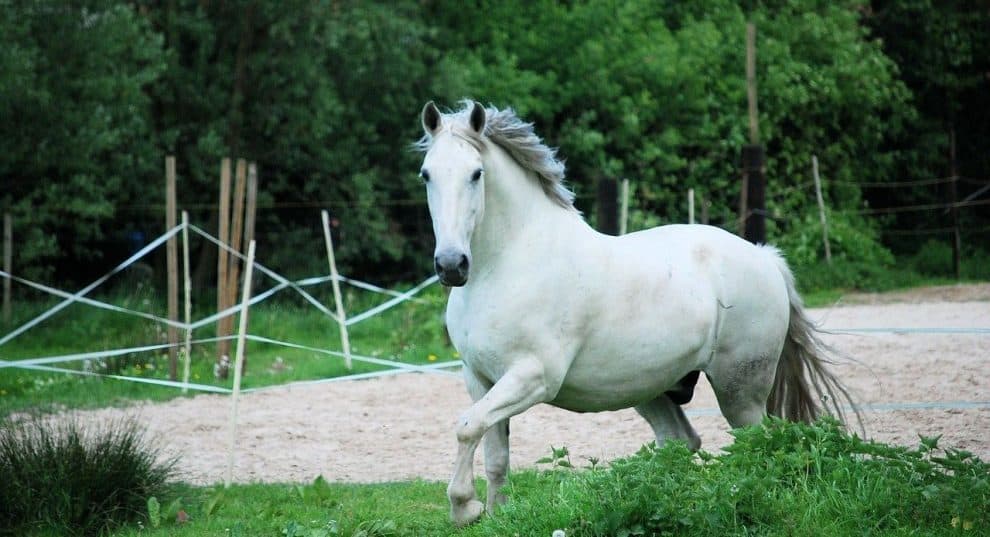Table of Contents
Is Glue Made From Horses? Is It A Fact Or A Myth?
Are you familiar with the saying “taking the horse to the glue factory”?
You are probably thinking about what the horse has to do with glue. These quotes belong to the use of horses to prepare raw material for making glue. So it is proved that preparing glue from horses s not a myth; it has a strong association with the history of preparing glue from traditional methods. Yes, dead horse pasts are indeed used to make glues in some parts of the world. But Elmer`s glue is not prepared with horses, as it used synthetic elements as essential ingredients. Elmer glue is no more using any animal part in their adhesives, and it is proved.
Why are horses suitable for making glue? Is it not the misery of this beautiful creature that they have a charming gait and sparkling skin but bones full of collagen. Essential proteins present in connective tissues such as tendons, cartilage, ligaments, and bones of horses have a high level of collagens. This large body animal is a huge source of natural collagen that can produce a large glue quantity. Pigs and cattle are also victimized for being part of this industry for thousands of years.
Is Elmer's Glue Made Out Of Horses?
What Is The Glue?
Glue is a sticky liquid used in art and craft; other uses are for repairing and bonding objects of different textures. The transparent hot glue hardens as exposed to the air; there are different types of glue available in the market made of non-toxic ingredients. Little kids have to use adhesives for educational and crafty projects, so it had to make of non-hazard compositions.
How Is Glue Prepared?
Glue is extracted from trees as well, which is known as organic sources of preparing adhesives. The Red Manjack Tree is found in trees grown in India bearing a sort of fruit. This tree contains a sticky liquid that is suitable to use for commercially preparing glue. Casein glue is made from dairy products like cheese and milk products. Starch extracted from trees and potatoes has high stickiness that makes it perfect glue to fulfill adhesive purposes. The glycerin is mixed to make them thicker to work efficiently.
The adhesive has industrial uses for small and heavy industries such as toys, stationery and has an influential role in packaging. Assembling heavy machinery, branding with labels, and construction industries require strong adhesives. In wooden furniture, the bonds are uses for various purposes. For rejoining or sticking of broken materials variety of glues are available in the market. The adhesives are used mostly in cello, glue sticks, mending shoes, and packaging gifts.
The adhesive in ancient days was used in the form of animal and plant-based compounds. Plant resins are common adhesives that were frequently used thousands of years ago, but now we live in a changing world. This particular industry’s primary function is to provide strong glues at affordable pricing that is not possible to handle with a little quantity driven from natural sources.
So while talking about Elmer`s glue, Is it still prepared with the collagen?
Not really, as the Elmer manufacturers have made a clear statement about using artificial sources for the glue preparation. Anyhow they haven’t disclosed all the ingredients and production techniques due to proprietary rights of Elmer`s glue; still, they rejected the idea of using animal-based raw materials in their adhesives.
Collagen is present in sufficient quantities in the dead animal’s body parts.
This product was known as “animal glue “in the past, but to remind you that all children’s adhesives are not manufactured from animal sources.
Animal glue was popular thousands of years ago. Still, with the rapid progress of human civilization, this trend vanished; it doesn`t mean it is not happening, some manufacturers are still using horses, but they are quite rare. So horses are used in making glue; it is a fact, not a myth, but for today’s social setup and working under regulations made for animal security, this is fading with every passing day.
People are more aware today than they were in the past, so now sick horses are bought to the slaughterhouses; instead, they are given a cure for their ailment. Every country has a different method to deal with horses due to the cultural hierarchy; some will present their meat to other animals as their favorite food, while in other parts of the world, they will be buried with respect.
Glue and horses are associated, but that doesn`t make it reasonable to use them as material for adhesives in this revolutionary era. Thus making glue with horses is indeed an ancient phenomenon, and now most of the bond is prepared from synthetic compounds.
Now we can get cheap glue with higher quality to serve the purpose of binding several hard and soft materials. White adhesives, including Elmer`s, is made of the rubbery mixture to be prepared with polyvinyl acetate emulsions; now the question arises about their logo. If these companies are not using animal particles, why are they linking their product with pictures of animals, such as smiling bulls? This is not logical evidence to claim these companies to use animals in their products; instead, it might display their organic properties and non-chemical composition.
Do They Still Use Horses To Make Glue?
Glue, historically taken from collagen-based animal glue, was called the hide glue. It was available in a granular form mixed with hot water to apply on dry surfaces, so this type of glue has a long ancient history.
Animal glue originated during 2000BC, and all process of making was written. After 1000BC, people used this glue for mural painting and manufacturing wooden furniture; it worked for the ancient Egyptian Pharaohs.
These animal-based glues worked for thousands of years to fulfill the glue needs. Elmer was an organic expert who had few about-to-put-down horses with him. The idea of using animal-based glue is quite unpleasant, especially for animal empaths around the world. Unfortunately, many people are still using horse slaughtering options to prepare glue instead of using synthetic base chemicals.
Many factories in different world regions are still using horses to get the necessary material for glue preparation. Do you feel OK about this idea? It often gives you a feeling of sympathy for a dying horse; what about the international organizations working for animal rights?
Investigating more about it, it will show you that mostly already dead or sick animals are bough to the slaughterhouses to proceed further. So if you imagine it like suddenly a horse is caught and slaughtered to use for materials, it is not an accurate perception. Still, we can`t eliminate the idea of using health horses for this purpose, they have to kill the animals sometimes to fulfill their production demand, and it is not merely dependent on sick animals.
The United States is no more running factories to use animal-based sources for manufacturing glue, but these countries are breeding horses. These horses are sent through imports towards Canada and Mexico, where animal-based adhesives are still prepared insufficient amounts.
When Did They Stop Making Glue Out Of Horses?
Adhesive today in people’s use has a long history belong to earlier years to the civilized world. The adhesive is a significant invention of human history; it took a long time to get what we are using today in its best form. Now the glue industry is flourishing and growing a profitable business in various countries of the world.
The glue originated from animal or organic sources, further developing into Elmer`s glue and now towards the Nano-tech form. In 70,000 BC, the caveman of South Africa was familiar with the glue-making procedures made of the tree-sap and red ochre; they tried to save their cave-paintings by using these gluey substances.
Firstly the Egyptians used liquid glues for binding wooden artifacts. The tomb of Faraos is full of artifacts that have various types of adhesives used for the orientation. At that time, the liquid adhesives were derived from the skin, brain, and connective tissues of different animals. The first initiative to commercialize adhesive production was in Holland; they establish an industry producing glue termed as “Horse Glue.” This situation leads to dropping dead or sick horses into the glue factories; that’s why it was widely known as horse glue.
After 1932, strict laws for animal protection prohibited the usage of animal bodies for commercial purposes. The need to prepare adhesives from artificial sources, and then an American beverage company initiated the production of plant-based glue, named Elmer`s glue. This production from organic sources reduced the usage of animal glue and affected its production industry. In 1947 Casco glue was introduced in the market as PVA-based material. Casco got popularity due to the main ingredient as CASEIN milk proteins, which later became Elmer`s glue that they still have the picture of Elsie, the cow as their brand identity logo.
Elmer’s latest form is synthetic based glue that is famous due to its environment-friendly composition and efficient ability to bind various materials. This adhesive has a strong brand reputation due to its high-quality performance.
Nano technology has rationalized the adhesive industry; it is inspired by the gecko, a reptile known for the layer of sticky substance around its feet. This is a theory-based composition that doesn’t require any animal parts. Instead, then it works as molecular adhesion that works many times stronger than the regular product available in the market. This glue is functional at cellular levels that work without being involved with any hazardous chemicals.
Our population is increasing at a higher speed it specifically increasing the demands of the stationary product, while for industrial purpose adhesives are in much need nowadays. Every new day demands a unique kind of product that can prove beneficial for larger people; hence, eve body tries to find affordable adhesives made of eco-friendly materials. This is a long way that started with animal glue and further evolved as Elmer`s. Now we can see the transformed product that uses Nano technology to fulfill the customer’s expectations. Developing adhesive invention and technology is inevitable for the industry.
Which Animals Are Used To Produce Glue?
They mostly farm animals are used to produce glue, such as:
- Fish
- Cattle
- Horse
- Rabbits
- Pigs
Do you ever notice that sticky substance stick to your fingers eating meat? This is the collagen present in the flashy bodies of animals. It is derived to get glue made of natural sources and has a strong bond to join surfaces.
Mostly hooves of horses and cattle parts are used to produce premium quality glue; fish glue is quite famous for using glass, wood, ceramics, leather, and metals. The collagen is derived from the Greek language with natural synthetics; this substance has the fantastic quality to bind various materials together firmly for a very long time. It might be a creepy thought for you, but the reality is that animals’ blood can also be used to produce glue due to the high concentration of protein substances.
The educational needs to be fulfilled with a higher quantity of adhesives that can`t rely upon animal sources. A day’s adhesive production industry is distinguished among the various markets to provide an ample supply of adhesives. Although animal sources provide a little market share, they are not dependable to meet huge market demand.
Human right organization has established strict criteria to bring the authorities to accountability in case of violation of animal rights. They are living beings and they preserved the right to be treated well, even after their death they should be dumped properly instead of taking to the glue factory.
Bottom Line:
Adhesives are used for various commercial and domestic purposes that require a larger quantity to serve the purpose. Animal-based glues are no more popular; most people consider it an unpleasant experience associated with disrespect of dead animals. Most of the world-class companies have found artificial methods to produce a larger quantity of glues to do the perfect binding.

I am a primary writer, mom, and long-time cat parent. My two Russian Blues are the queens of my house. Cats are the most loved pet all over the world due to their cuddly gestures and cute looks. I always felt my soul has a deeper bond with animals, especially cats.
My work is to guide pet owners about their frequent queries about their beloved one pet. I have spent 10 years of my life working with hundreds of animal species. This passion for animal care and love gives me the courage to spread my words worldwide. My writings will help you to decide about the food, housing, and training of your pet.

